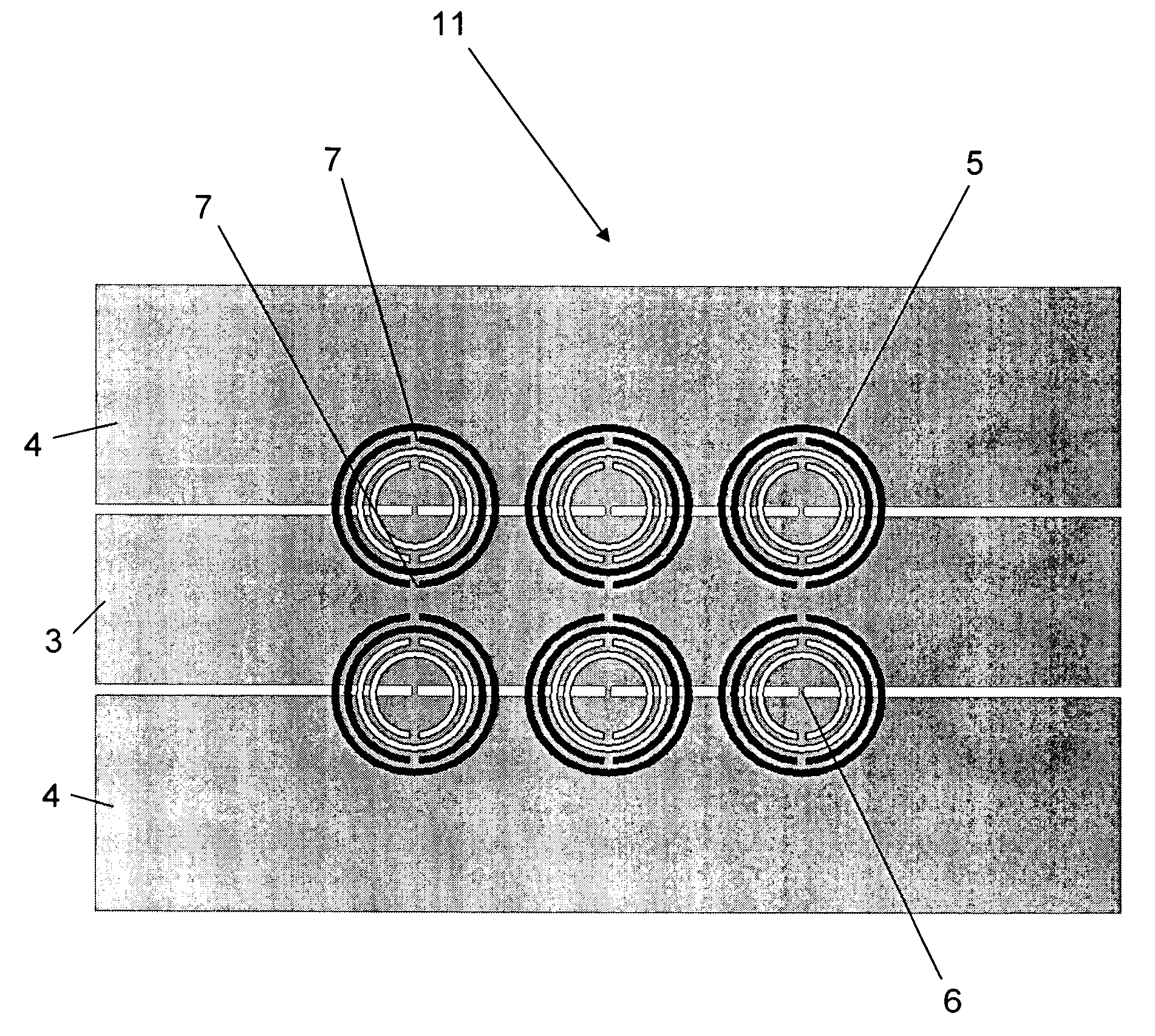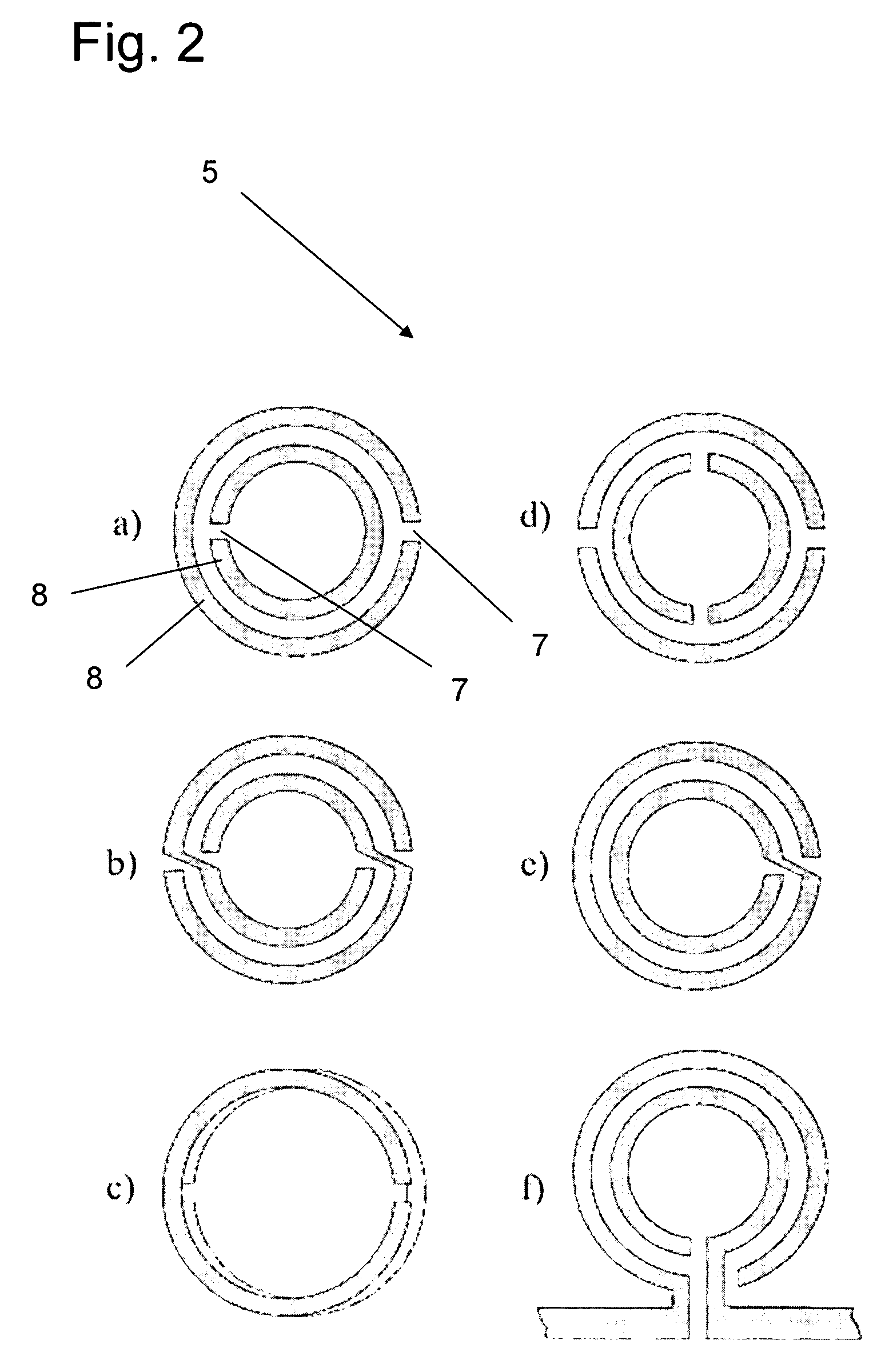Filters and antennas for microwaves and millimetre waves, based on open-loop resonators and planar transmission lines
a filter and micro-wave technology, applied in waveguides, antenna feed intermediates, filters, etc., can solve the problems of not being compatible with circuit manufacturing technologies (printed circuits, microelectronic technologies), and the practice of using the above structures as filters, antennas, etc., and achieve good directivity and polarisation.
- Summary
- Abstract
- Description
- Claims
- Application Information
AI Technical Summary
Benefits of technology
Problems solved by technology
Method used
Image
Examples
Embodiment Construction
[0035]FIG. 1 of this invention shows a planar transmission medium 1 structure of the buried coplanar wave guide type, i.e., with dielectric substrate 2 on both sides of the central metallic plane 10 on which the conductor strip 3 is formed, separated from the metallic ground planes 4 by the slots 9. Alternatively, the coplanar wave guide can consist of the same structure as that shown in FIG. 1, though with dielectric substrate 2 only on one of the sides of the central metallic plane 10, which contains the central conductor and the metallic ground planes 4. Or any other type of configuration with multiple layers of dielectric substrate 2. Other media of propagation are also possible, such as microstrip lines, striplines, and in general any planar transmission medium.
[0036] For the embodiment of high-performance filters and antennas it is advisable to use dielectric substrates 2 with low dielectric losses in order to obtain frequency responses with the lowest possible losses in the ...
PUM
 Login to View More
Login to View More Abstract
Description
Claims
Application Information
 Login to View More
Login to View More - R&D
- Intellectual Property
- Life Sciences
- Materials
- Tech Scout
- Unparalleled Data Quality
- Higher Quality Content
- 60% Fewer Hallucinations
Browse by: Latest US Patents, China's latest patents, Technical Efficacy Thesaurus, Application Domain, Technology Topic, Popular Technical Reports.
© 2025 PatSnap. All rights reserved.Legal|Privacy policy|Modern Slavery Act Transparency Statement|Sitemap|About US| Contact US: help@patsnap.com



